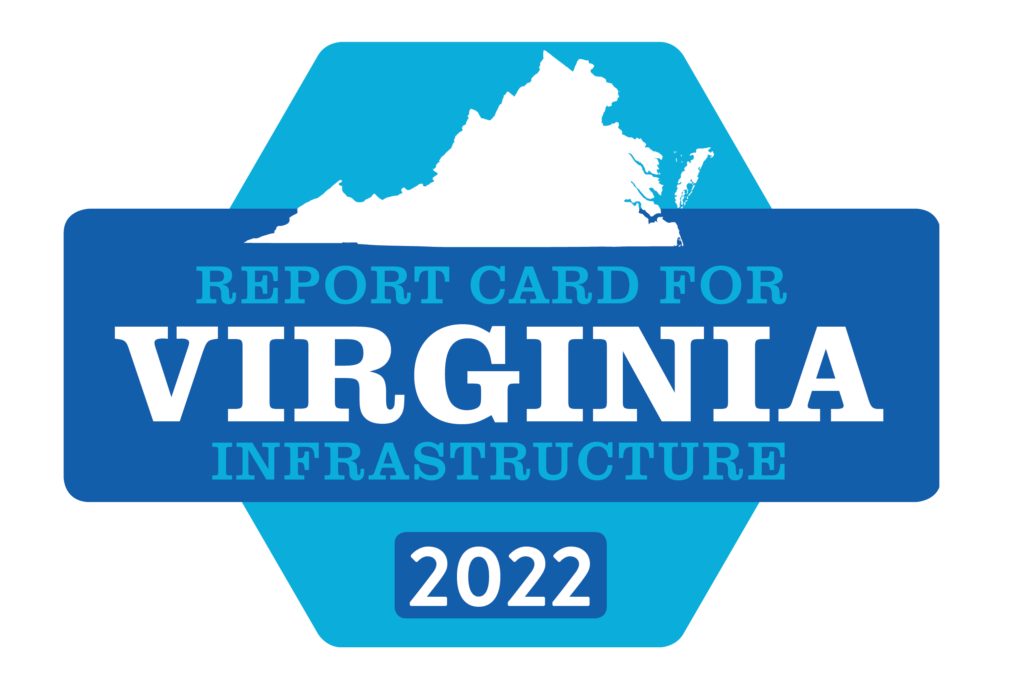The Virginia Section of the American Society of Civil Engineers (ASCE) released the 2022 Report Card for Virginia’s Infrastructure on December 6, 2022. ASCE members offered several years of volunteer effort to produce the assessment and announced the results in Virginia Beach beside the Lesner Bridge, which Virginia’s Department of Transportation recently reconstructed.
The new report card contains 11 categories of infrastructure receiving an overall grade of a ‘C’. That means Virginia’s infrastructure is in mediocre condition and requires attention. Virginia is a step ahead of the national average of ‘C-‘ given in the 2021 Report Card for America’s Infrastructure.
Nine of the 11 categories ranked higher than the national grades, as only rail (‘C-‘ compared to the national ‘B’ grade) and wastewater (tied with the national grade of ‘D+’) ranked the same or lower, a testament to the state’s prioritization of its built environment. Virginia has implemented ambitious plans to improve each of its infrastructure systems and additional resources from the state level and the bipartisan infrastructure law will help these efforts. Civil engineers graded bridges (B), dams (C+), drinking water (C+), public parks (C), rail (C-), roads (C-), schools (C-), solid waste (B-), stormwater (C-), transit (C-), and wastewater (D+).
Virginia’s transportation sector has performed better than the national average. Roughly 3% of the state’s bridges are in poor condition – less than half the national average of 7.5% — and the percentage of roads in ‘good’ condition rose from 48% in 2018 to 51% in 2022. Virginia is also a regional leader in transit services with connection to the Washington, D.C. Metro system and with 41 transit systems across the state, some of which have already surpassed pre-pandemic ridership levels. However, wastewater systems, despite making progress by reducing sewage overflows, face more than $6 billion in needs over 20 years and will need significantly more resources to improve systems and protect water quality for communities and the natural environment.
The report also includes calls to action to raise the grades, which include:
- Ambitiously seek federal funding available from recent federal legislation such as the Bipartisan Infrastructure Law and American Rescue Plan Acts of 2021, plus the Inflation Reduction Act and CHIPS+ laws from 2022, provide limited time opportunities to close the infrastructure gaps identified in this report.
- Follow through on plans to advance transportation and water projects. Virginia’s authorized plans at the state and metropolitan level feature actions to raise the grade of every infrastructure category. However, plans to spend money in the next few years won’t amount to positive change unless decision-makers at those state and local levels appropriate and allocate the funds during a likely upcoming economic downturn.
- Consider equity and climate change when implementing investment. Many projects are “shovel ready,” but a smaller group is “shovel-worthy.” When making that judgement, historical and present-day equity data – as well as the threats from climate change – should be centered. This begins with technical assistance and cross-jurisdictional collaboration. A central constraint to improving Virginia’s infrastructure are the resource and staffing levels at smaller and disadvantaged communities.
